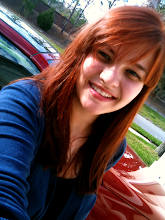Jeannina Perez
WST 3015 (Introduction to Women’s Studies)
8 February 2010

Body image is one of the most prominent obstacles the feminist movement faces in its attempts to empower women. As members of a patriarchal society, we are inundated daily with images and messages that instruct us to accept as natural “women as objectified sexual property valued primarily for their usefulness to men” (Johnson 74-75). We are told that certain traits create a standard of beauty, one that is “defined as thin, lean, tall, young, white, and heterosexual, with flawless skin and well-groomed hair” (Kirk and Okazawa-Rey 208). The issues with this beauty standard are obvious and plentiful: it marginalizes and others women of color, older women, queer women, and women of body types other than thin. Just as importantly, however, the very term “beauty standard” is an issue in and of itself, as it implies that this type of beauty is something normal, something that every woman should have little to no difficulty achieving and maintaining—either on her own or with the help of beauty aids like cosmetics, diet programs, and clothing—even when reality couldn't be more different.
The Estée Lauder ad promotes one such beauty aid: a radiance lift makeup crème designed to restore “the radiance, the moisture, the resilience of youthful skin.” The purpose of the product alone marginalizes and demeans women. To be beautiful, it implies, a woman must not age; by consequence, all women who do choose to allow signs of aging to show are not beautiful, simply because they do not appear young. This “standard” is both impossible and nonsensical, most noticeably in its refusal to acknowledge that aging is a natural, inevitable process. Further, the youthful appearance it defines as beautiful strips a woman of visible experience and the social respect that accompanies it, instead causing her to appear vulnerable and naïve—two stereotypes commonly associated with youth—and ultimately putting her at an automatic disadvantage to any men of similar age she encounters, who will likely treat her as the age she appears, and not the age she actually is.
The accompanying images are just as problematic. First, examine the model. Her hair is pulled back, and her neck and shoulders are completely covered, drawing all attention instantly to her face, which presents a perfect visual representation of the Western standard of beauty. Her skin and eyes are light; her lips are pink and full, parted to create a deeper impression of naivety and openness; her eyebrows, eyelashes, and hair are all perfectly groomed; her complexion, presumably through the help of the advertised cosmetic, is smooth and bright, radiant. She embodies every standard of beauty women are pressured to hold themselves to, and she does so flawlessly, seemingly effortlessly—perpetuating the impression that this type of beauty is standard and easily achievable. In reality, photographs and ads like this are often “airbrushed and digitally enhanced” (Kirk and Okazawa-Rey 208). But because they are presented without disclaimer, we accept them as attainable standards, ignoring both the marginalizing implications doing so has for any woman who doesn’t fit the thin, fair-skinned, youthful model and the fact that these standards are, in most cases, completely unrealistic, and not something women should pressure themselves to be.
Next, examine the makeup itself. As pictured, the cosmetic comes in three shades, all of them designed to match light to medium skin-tones. According to the product’s extended web advertisement, it actually comes in fifteen shades, although, again, they all appear designed to match relatively lighter skin-tones, which clearly excludes a large population of women. Combined with the fair-skinned appearance of the model and the ad’s failure to mention this range of shades (limited as it looks), the product seems targeted primarily at White women or women with similarly lighter skin, even to the exclusion of women of color. Which begs the question: if a youthful complexion is something all women need to be beautiful, how are women of color supposed to obtain it and feel confident, socially-accepted, and pretty? Apparently, we can conclude, not with the help of Estée Lauder.
Works Cited
Johnson, Allan G. “Patriarchy, the System.” Women’s Lives: Multicultural Perspectives. Ed. Gwyn Kirk and Margo Okazawa-Rey. New York: McGraw-Hill, 2010. 68-76. Print
Kirk, Gwyn, and Margo Okazawa-Rey. “Women’s Bodies, Women’s Health.” Women’s Lives: Multicultural Perspectives. Ed. Gwyn Kirk and Margo Okazawa-Rey. New York: McGraw-Hill, 2010. 207-224. Print
Resilience Lift Makeup by Estée Lauder. Advertisement. Estée Lauder Official Site. Web. 7 February 2010.
Resilience Lift Makeup by Estée Lauder. Advertisement. Playbill January 2010: 22-23. Print.

Hey Rachel, I really like that you included Johnson in your text. (I limited myself to this week's readings) but it ties in perfectly.
ReplyDeleteI also didn't realize that even though Estee Lauder carried so many shades, they never really cater to women of color. Recently, I know the make-up industry has tried taking this into consideration: I think Halle Berry, Rihanna, Queen Latifah, and Beyonce have each been a spokesperson for cosmetics companies in the past few years. But in each of those instances, the women are light-skinned Black women. I think it'd be interesting to see an instance where that changes, and a dark skinned woman would be in a position where she can honestly promote their products.
As a side note- how creepy is it that the model in the photo literally has no lines on her face? I mean I don't even think she has enough skin to blink or smile if she wanted to with all the airbrushing they've done. I really enjoyed your post though ^.^
-Dom